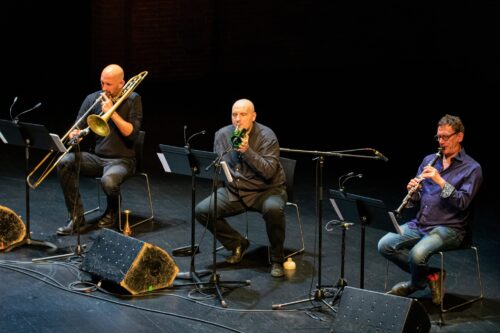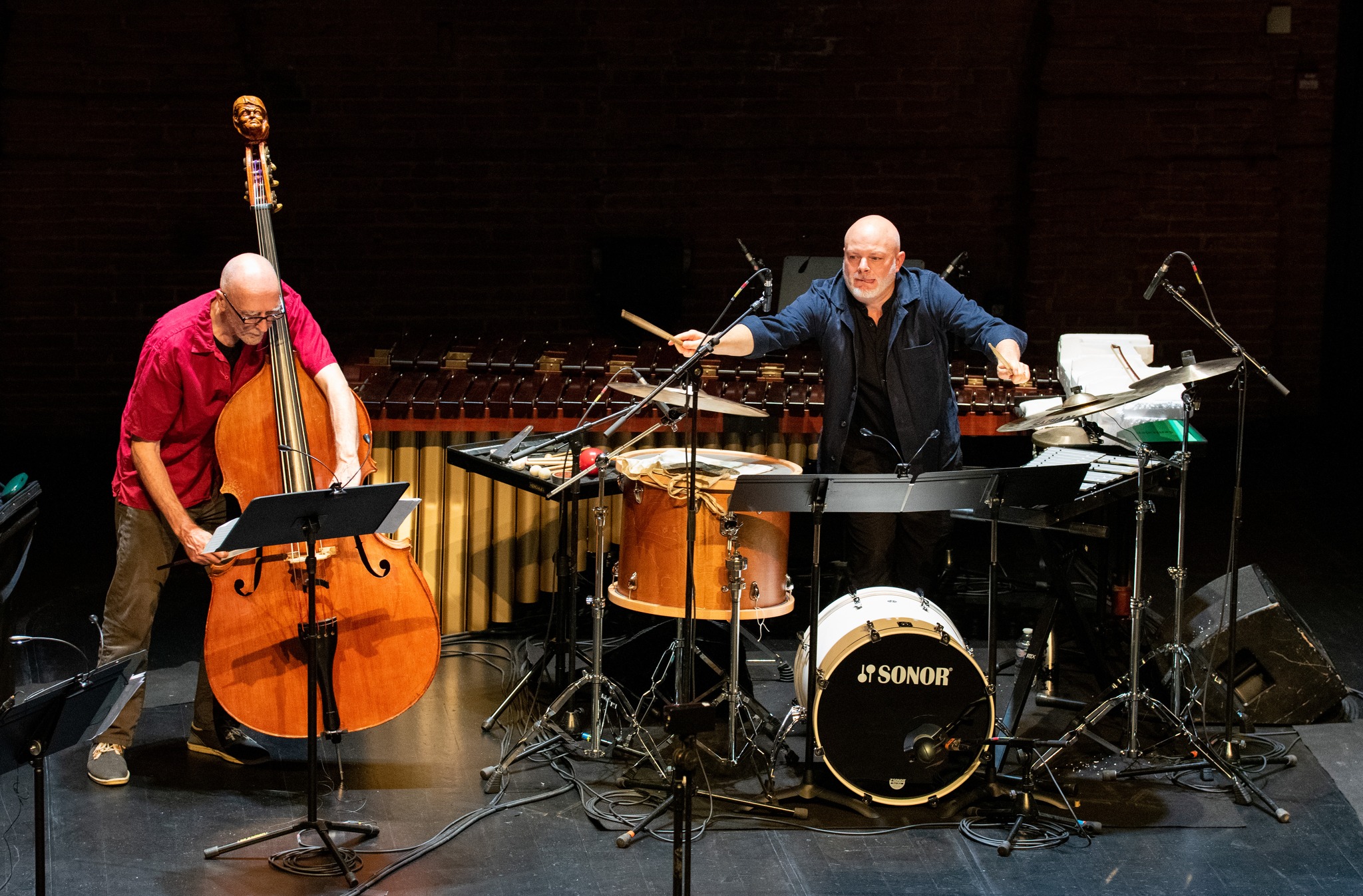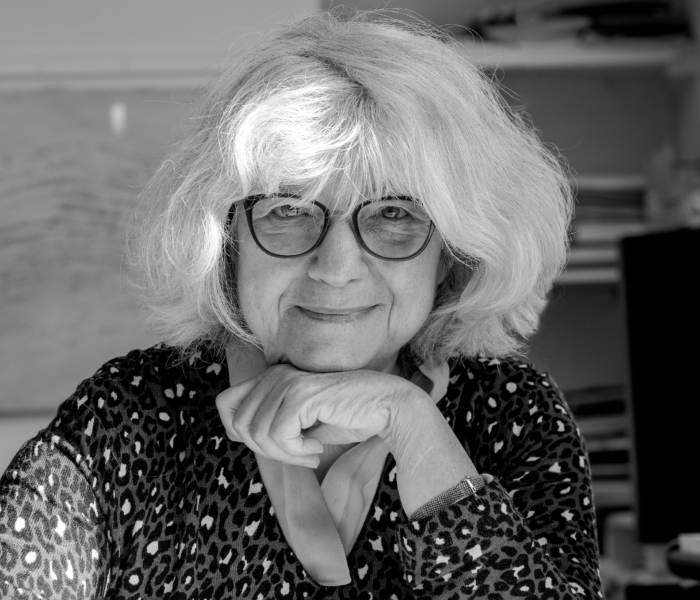Dans le cadre du festival riverrun, du GMEA à Albi, Kasper T. Toeplitz, nous livre les clés de la création de Metal Machine Music de Lou Reed à l’occasion du concert donné par Zeitkratzer le 3 octobre au Théâtre Garonne à Toulouse.
A essayer de définir ce qui pourrait être la plus grande révolution musicale du XXIe siècle – bien que celui-ci soit loin d’être terminé, mais surtout malgré le fait que jouer à ce jeu est toujours un peu futile – il est très possible que ce soit un changement intervenu dans la pratique des instruments « traditionnels », ceux qu’on continue de nommer les « vrais » instruments : tous ceux qui sont consignés dans les manuels d’orchestration, et pour lesquels sont écrites des pages et des pages d’études là où il n’y a pas d’études de virtuosité progressive pour le lap-top ou le hacking DIY (do-it-yourself) de jouets électroniques – encore qu’il en existe une sorte de Bible, le livre « Handmade Electronic Music : The art of Hardware Hacking » de Nicolas Collins.
Il peut paraître curieux de parler d’un progrès en musique – voire de révolution – porté par une pratique instrumentale, par la façon dont les instrumentistes et compositeurs d’aujourd’hui piochent leur inspiration dans des sonorités « comme électroniques » mais joués sur instruments acoustiques, alors qu’au siècle dernier le compositeur Olivier Messiaen affirmait que le changement le plus important pour les compositeurs du XXe siècle était la musique électronique y compris, et même surtout, précisait-il, pour ceux qui ne la pratiquaient pas – et lui-même a écrit très peu de musique électronique, et ce principalement pour les Ondes Martenot, instrument pour lequel les anciennes valeurs ou définitions de ce qui est musique (hauteur, durée) sont opérantes, alors que la révolution instrumentale en cours dont on parle ici, redéfinît la notion de ce qui est joué, pose l’instrument en un générateur de sons largement inspirés des « sonorités électroniques », déplace la finalité du travail technique, la faisant passer de la virtuosité classique vers une connaissance de ses possibilités les moins évidentes, permettant de replacer l’instrument à sa place de « simplement » instrument, un outil qui rend possible la matérialisation de la musique au sens large, pas seulement de la musique pensée pour cet instrument donné.
A vrai dire l’approche consistant à appliquer une « pensée électronique » au maniement d’instruments traditionnels n’est pas vraiment toute neuve ; dans les années 1970 déjà il y a eu pléthore de publications et recherches sur des utilisations « autres » des instruments traditionnels, par exemple comment jouer des sons multiphoniques, donc des sortes d’accords, sur des instruments à vent comme flûte, saxophone, clarinette ou basson, des instruments essentiellement monophoniques ou mélodiques. Même avant, puisque dès les années 60, de nombreux compositeurs ont écrit pour des ensembles instrumentaux des sons provenant d’un imaginaire électronique, comme les énormes clusters glissants produits par un orchestre de 52 instruments à cordes composés par Krzysztof Penderecki dans son Thrène à la mémoire des victimes d’Hiroshima en 1959, la micropolyphonie développée à l’orchestre par György Ligeti en 1961 pour Atmosphères, où encore les « partitions de coordination » de Christian Wolff comme son For 1, 2, or 3 people de 1964, qui déjà préfigurait la « computer music » en ne notant pas les hauteurs et durées des notes à jouer mais les interactions entre les musiciens presque à la façon d’un schéma de circuit électronique.
Pourtant il est à parier que ce ne sont pas tant ces expérimentations d’il y a plus d’un demi-siècle qui ont changées les pratiques et les recherches sonores des musiciens et instrumentistes d’aujourd’hui, mais que ce changement vient de leur ouverture à d’autres musiques, à toutes les musiques a-t-on envie de dire, les plaçant sur un pied d’égalité au contraire de l’attitude conservatrice consistant à parler de « musique savante » et des « autres » pratiques, les différenciant par le degré de virtuosité calibrée nécessaire tant à leur exécution qu’à leur composition. Et s’il y aura sans doute encore longtemps les tenant de la vieille école regrettant qu’aujourd’hui la maîtrise du contrepoint soit remplacée par celle du frottement d’une brosse à poils durs sur la peau d’une grosse caisse, le changement de la pensée de la musique, ce qu’elle est, comment la concevoir et la pratiquer, change celle-ci de façon radicale.
Et s’il y a un ensemble qui peut se réclamer de ce changement de pensée, d’une circulation entre des musiques censément « opposées », qui navigue entre Stockhausen, James Tenney, Xenakis, John Cage et Merzbow, Whitehouse, Sonic Youth ou les compositeurs « inclassables » d’aujourd’hui comme Dror Feiler ou Zbigniew Karkowski, c’est bien Zeitkratzer, ensemble formé en 1997, sous la direction de Reinhold Friedl. Dès le départ l’ensemble, constitué d’une dizaine de musiciens, majoritairement de formation classique et jouant d’instruments acoustiques mais amplifiés (à l’exception de rares ajouts de guitare électrique) propose un répertoire qui va des « classiques du XXème siècle » à des compositions, voire des transcriptions de musiciens d’aujourd’hui venant d’autres sphères, moins académiques. Et c’est le saxophoniste Ulrich Krieger, qui est non seulement un musicien de formation classique, parfaitement à l’aise avec le répertoire contemporain, mais également acteur des nouvelles musiques, improvisées, de recherche ou électroniques, qui va proposer une transcription du légendaire Metal Machine Music de Lou Reed, idée qu’il avait depuis qu’il avait entendu le disque, sorti en 1975.


Lorsque Lou Reed, finalement et après bien des tergiversations, accepte l’idée et donne le feu vert pour la transcription de la pièce, Ulrich Krieger et Luca Venitucci (qui jouait de l’accordéon dans Zeitkratzer), font ce travail en quelques semaines seulement, en 2002, ce après quoi les deux musiciens se rencontrent à Berlin pour comparer leur travaux et établir le score final. Le résultat tel que joué par l’ensemble, et enregistré par deux fois sur disques (sur Asphodel Records, puis sur Zeitkratzer Productions) est assez étonnant. Étonnant par la similitude timbrale avec le Metal Machine Music originel, alors que l’instrument emblématique de tout le projet, la guitare électrique, en est absent.
Parce que Metal Machine Music c’est au départ une histoire de guitares (électriques) – mais également de leur absence, car à l’écoute du double LP original on ne distingue pas la présence de guitares dans l’album, que du son électronique et que la pochette de l’album affirme
METAL MACHINE MUSIC AN ELECTRONIC INSTRUMENTAL COMPOSITION *THE AMINE ß RING
avant de préciser
No Synthesisers
No Arp
No Instruments?
Et plus loin:
No panning
No phasing
No
Un « non » opposé à l’instrumentarium rock classique, guitare-basse-batterie, et surtout à son expression première: la voix, et par là même la chanson. Mais aussi à l’idée récurrente dans l’histoire du rock : la bataille entre virtuosité instrumentale, la maîtrise technique d’un instrument et la vacuité de cette idée à laquelle s’opposent les notions de vérité et d’urgence (et il ne faut pas oublier que 1977 est l’année de la naissance du punk, en partie en réaction au rock « progressif » et à ses excès de virtuosité).
Pourtant cette idée de « machine » (et son affirmation de No Instruments – agrémenté du point d’interrogation) n’est que fantasmée – Metal Machine Music est un album de guitares, non pas de machines, plus précisément de guitares électriques. Guitare au sens large, c’est à dire non seulement l’instrument tendu de cordes mais également tous ses périphériques, amplis Marshall et Fender, effets et encore plus loin, en cercles concentriques, l’équipement de studio : casques et haut-parleurs, magnétos et micros. L’essence de cette musique est l’amour de la guitare électrique et de son corollaire le plus fameux : le feed-back. Des guitares, spécialement accordées, posées contre des amplis, comme se jouant elles-mêmes : le son émis par l’ampli excite les cordes dont les vibrations créent le son que l’ampli émet. Une autre guitare, avec son propre ampli, et un accordage différent. Et une autre encore. Un empilement de feedbacks de guitares, dont les résonances se mélangent, chacune parasitant un peu l’autre, l’amenant dans un autre territoire, créant une masse commune.
Metal Machine Music cache l’origine de sa pâte sonore – le No Instruments? des notes de pochette – et ne donne pas à entendre les guitares; le sous-titre de la pièce, “An Electronic Instrumental Composition”, laisse supposer des instruments mais il est certain que cette précision d’instrumental soit plutôt une mise en garde: il n’y a pas de chansons, ici, ce n’est pas une continuation de Walk on the wild side et de ses « too toodo toodo ». Seulement des guitares, mais camouflées – pour les percevoir clairement il vaut mieux écouter l’album à demi-vitesse. Quant à « composition », il semble qu’à l’époque de la sortie du double LP, la question ne paraissait pas très sérieuse : même si des bruits ont couru selon lesquels le disque aurait dû paraître dans la collection « classique » de RCA (Red Seal), ils sont largement invérifiables aujourd’hui et semblent plutôt être une sorte de légende urbaine ; ce n’est que le travail et le positionnement de Zeitkratzer qui posent cet amas sonore comme « composition », pièce à rejouer encore et encore, en dehors de la machine (à bruits, à sons) qui l’a engendrée, mais qui en quelque sorte a permis la réinvention des instruments et par là justifie, un demi siècle plus tard le No Instruments?
Festival riverrun, concert le 3 octobre à 20h au Théâtre Garonne, Toulouse



)



